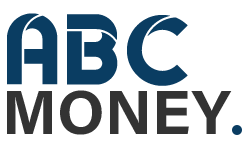There are many aspects that come into play when it comes to a perfectly designed website, that has consistently high conversions. Every feature and function on your site needs to work together, to guide your site users to their end goal, and this is where UX design comes into play.
The perfect user experience needs to have the user at its central focal point. Everything a web designer creates needs to serve the user and their goals and motivations. If there are flaws in the user’s journey, you could see your site visitors dropping off before they reach your conversion point.
To help you identify whether it is your UX design that is the cause of your poor conversion rates, London based UX design agency, USIO, have provided a few points to check over. These are just a few of the most commonly found issues when it comes to poor UX, but they are also easily fixed.
Can people find your point of conversion?
More often than not, businesses do not have a clear and powerful CTA on their homepage. Any booking or enquiry forms need to take pride of place on your landing page, in order for your users to easily convert.
Adding in a large button to the top of your homepage, with a clear call to action, can do wonders for conversion rates. If it is right in the user’s eye line as soon as they land on the page, they are far more likely to click and convert.
For e-commerce sites, making sure customers can easily find their baskets and checkout options is the most important aspect.
Are your contact forms and checkout procedures simple and easy to follow?
Overcomplicating the conversion process is easily done. Adding in extra data capture steps or making your checkout process long winded, can all contribute to high drop off rates. Any type of form should only include the absolute basic fields e.g. name, email address and message box.
It’s also important to make it clear as to what the users details will be used for and that it will be protected under the data protection act. If users are made aware of how their details will be used, you are more likely to create trust and improve the chances of them completing the form.
The same applies to the checkout process. Make sure you make it clear what payment methods can be used and how that data will be kept secure. Offer the option of using PayPal and offer a ‘guest checkout’ option for faster conversion.
Is your site navigation clear and direct?
Your main landing page will always be your homepage, this page will usually appear highest in Google rankings and any natural links will, more than likely, be pointing to this page.
When users land on your homepage, they want to be able to immediately find what they’re looking for, or they will head back to their search engine to find one of your competitors. Your navigation should not only be easy to find straight away, but have clear and precise labels, to help guide the user to the exact information or product they are looking for.
Is your site design focused around your user journey?
UX design literally means user experience design, this means your users are your focus and your site should be perfectly catered for their needs. Your user journey needs to be like a perfectly smooth road that leads directly to your end goal. Any bumps or sharp turns could throw your site visitors through a loop, confusing them or putting them off completing their task.
The design of your website isn’t all about how the site looks, the most important part is how it functions. Pages and images need to be quick to load, CTAs need to be clear and the focus of any landing page and user journey needs to be seamless.
Keeping your user at the forefront of your UX design will not only ensure a happy and loyal customer, but also increase your sites chances of regular conversions.

